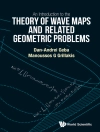Singularity theory is a far-reaching extension of maxima and minima investigations of differentiable functions, with implications for many different areas of mathematics, engineering (catastrophe theory and the theory of bifurcations), and science. The three parts of this first volume of a two-volume set deal with the stability problem for smooth mappings, critical points of smooth functions, and caustics and wave front singularities. The second volume describes the topological and algebro-geometrical aspects of the theory: monodromy, intersection forms, oscillatory integrals, asymptotics, and mixed Hodge structures of singularities.
The first volume has been adapted for the needs of non-mathematicians, presupposing a limited mathematical background and beginning at an elementary level. With this foundation, the book’s sophisticated development permits readers to explore more applications than previous books on singularities.
قائمة المحتويات
Part I. Basic concepts.- The simplest examples.- The classes Sigma^ I .- The quadratic differential of a map.- The local algebra of a map and the Weierstrass preparation theorem.- The local multiplicity of a holomorphic map.- Stability and infinitesimal stability.- The proof of the stability theorem.- Versal deformations.- The classification of stable germs by genotype.- Review of further results.- Part II. Critical points of smooth functions.- A start to the classification of critical points.- Quasihomogeneous and semiquasihomogeneous singularities.- The classification of quasihomogeneous functions.- Spectral sequences for the reduction to normal forms.- Lists of singularities.- The determinator of singularities.- Real, symmetric and boundary singularities.- Part III. Singularities of caustics and wave fronts.- Lagrangian singularities.- Generating families.- Legendrian singularities.- The classification of Lagrangian and Legendrian singularities.- The bifurcation of caustics and wave fronts.- References.- Further references.- Subject Index.












